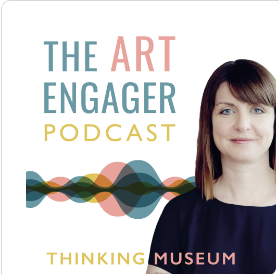A very short intro to Making Thinking Visible in your classroom. Part 3

Going back to basics before we say goodbye!!!
Wrapping up this mini-mini course on Making Thinking Visible. Ron Ritchhart lists the eight cultural forces that should be present in any culture of thinking. The presence of these forces in a way ensures that thinking is present in your classes.

Expectations: that is students need to know what we really expect from them. They cannot find themselves amidst unknown goals. SO be very clear about what success looks like. Share it with them.
When we work with thinking in class we trigger lots of student-student interaction allowing for more and more learning to happen. Not just what the teacher wants the students to learn but what students themselves can learn among them. The learning is enriched and students co-teach with us.
Find as many opportunities as you can to make your students think. Tweak your traditional activities, your international exams activities, ask them the powerful question: What makes you say / think / feel that? Encourage them to expand their thinking. There are a number of ways we have to make them think. Profit from those. Use them continually, till you can ‘t live without them!!
The environment in which your lessons take place is also important. The physical context in which learning takes place has a say in the thinking of your class. Do your walls show the thinking that is taking place in your lessons? Are they a picture of the thinking processes of your students? Can they see their processes pictured there? I leave you this link for you to read when you have time.
https://www.edutopia.org/blog/3-unused-teaching-tools-furniture-floors-and-walls-ben-johnson
Are you modeling your thinking processes to your students so that they see how you think? Do you speak as you solve an exercise or draw something on the bb? Do you share what you are doing and why to your students? You are the best model they can have. So push yourself to be a thinking model to them. Say: I connect that to…I can see that you are making an inference. This is my evidence. What is yours?
Model model and model
We cannot emphasize enough how important it is to allow time for the thinking to take place in your classes. Ask yourself after every class: To what extent have I given my students the time to think, reflect, share, comment, ask questions? If you think you did well, good for you!! Keep on doing it. If you feel more could have been done, make amendments to your next lesson plans to make sure you allow your students to think. This does not need to happen every class but make sure you have some thinking time in the week.
The thinking routines are a great technique to help students think just following a few steps. The important thing here is to do this often so that students learn the routines and can eventually use them on their own when they are confronted with a problem to solve, something they have to study. If they have learned to see and recognize their thinking processes they will be able to apply them when they need them. But not only consider the thinking routines. There are other ways in which to make our students think like tweaking traditional activities, using the language of thinking in the class, asking the powerful question: what makes you say that?
And last but not least, the language of thinking (for me) is the most important aspect which can make a huge impact in our lessons as far as thinking is concerned. Change your language, include a lot of thinking words, make comments as said before when students speak: That is an opinion. Or ask them: Is that your opinion or can you back it up with evidence from the text? What can you infer from the text? What do you wonder? Enrich your vocabulary with the language of thinking and you will have given them a gift for life. When you have lots of time constraints, institutional demands or just too many things to tackle, do not despair: Use a rich language of thinking and you will still be having a huge impact on the learning of your students. This especially applies to international exams demands.
I leave you a checklist (pdf) to assess to what extent these cultural forces are present in your classrooms. This is a personal checklist, just for you. (Self Assessing CoT_EN) Go through it. Answer the questions to yourself. Answer them sincerely and draw plans upon your results. Before answering, think what would anyone see if he/she walked into your classes? Then plan your next steps based on your honest answers.
This is the end of this very short intro to Making Thinking Visible. I hope you have enjoyed the ride!
More to come!
María

 Publicación siguiente
Publicación siguiente


